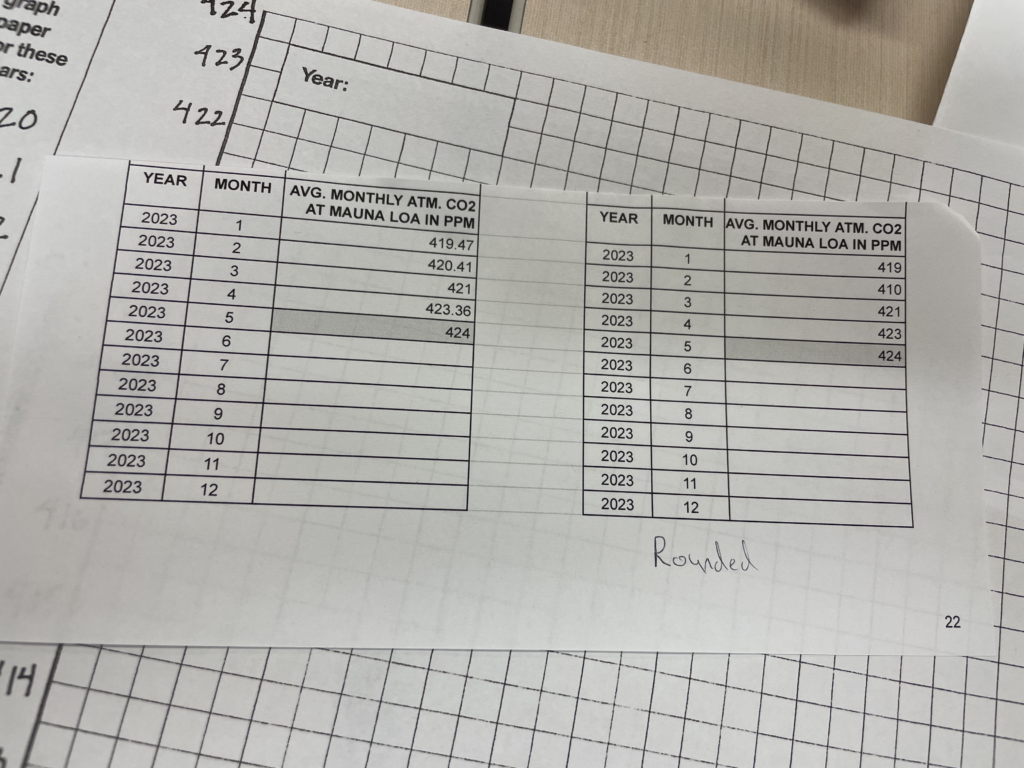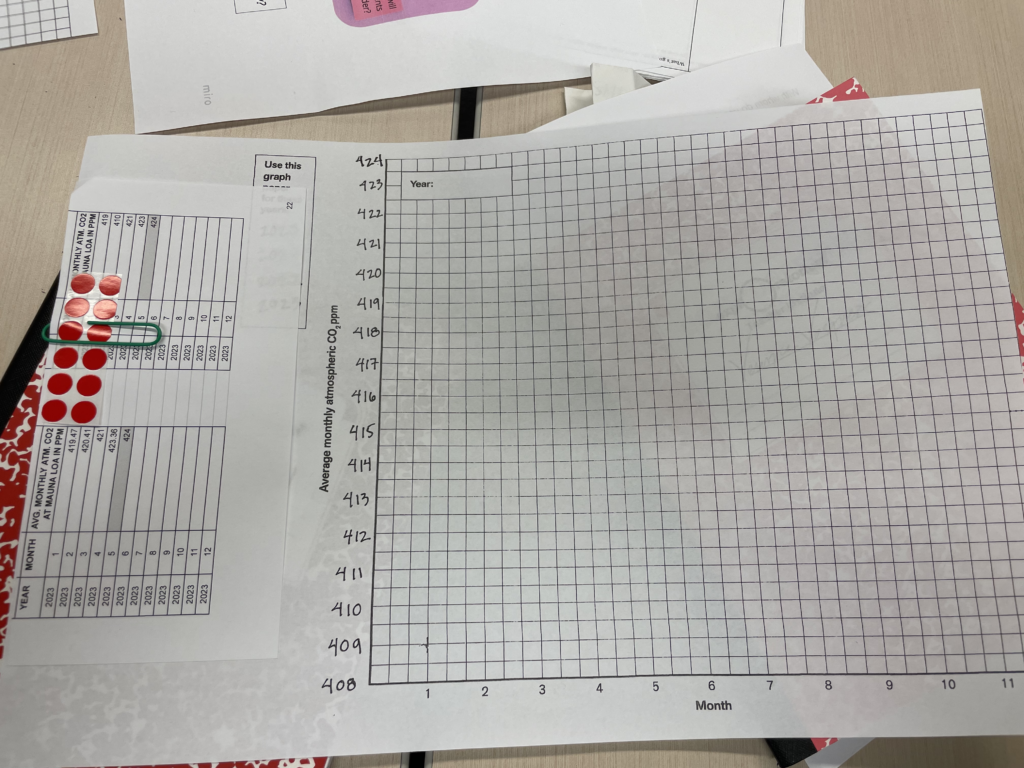Content : Our Changing Atmosphere Workshop · Nature Based Solutions for Disaster and Climate Resilience MOOC ·
Our Changing Atmosphere – Exploratorium Workshop
On Wednesday June 28th I attended a workshop with the Exploratorium Teacher Institute on what’s been happening to carbon dioxide (CO2) levels in the atmosphere.
We started the workshop with every participant graphing a year of data from the average monthly CO2 levels at the Mauna Loa research laboratory that ison the big island of Hawaii (We used red dot stickers to depict the CO2 levels on Mauna Loa).
Here is a picture of the data sheets and graph paper before we graphed them:
Here is the data from one year on Hawaii
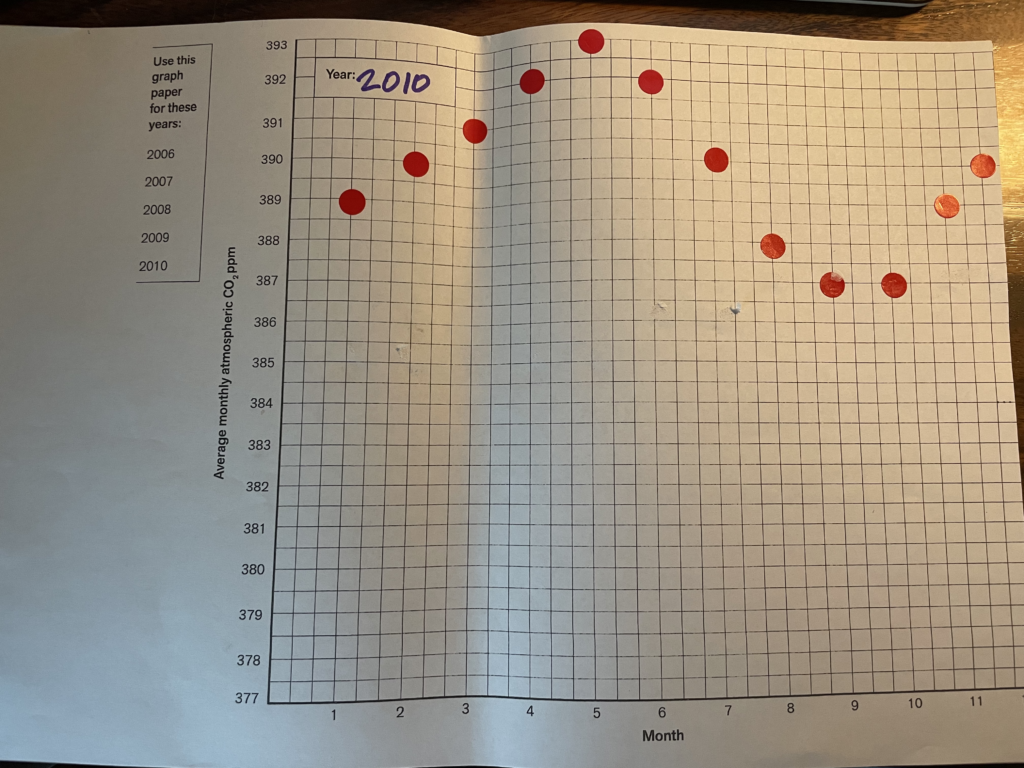
Each individual year of data from Hawaii resembled a sinusoidal curve, with CO2 levels peaking in late winter and bottoming out in early fall.
After graphing the Mauna Loa data, we made observations, asked questions, and subsequently added to each graph CO2 data from Antartica using blue dot stickers.
Below is a graph with both the Hawaii and Antartica data.
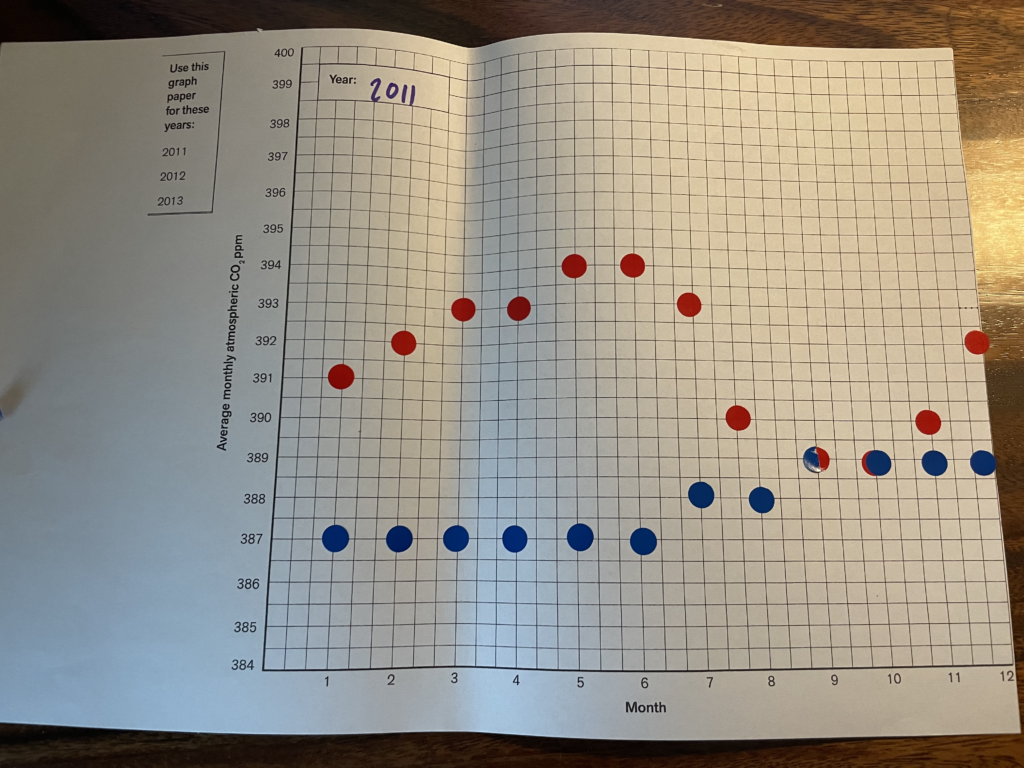
The final major step of our graphing adventure was to put all the years together.
Below is a picture of what that looked like:
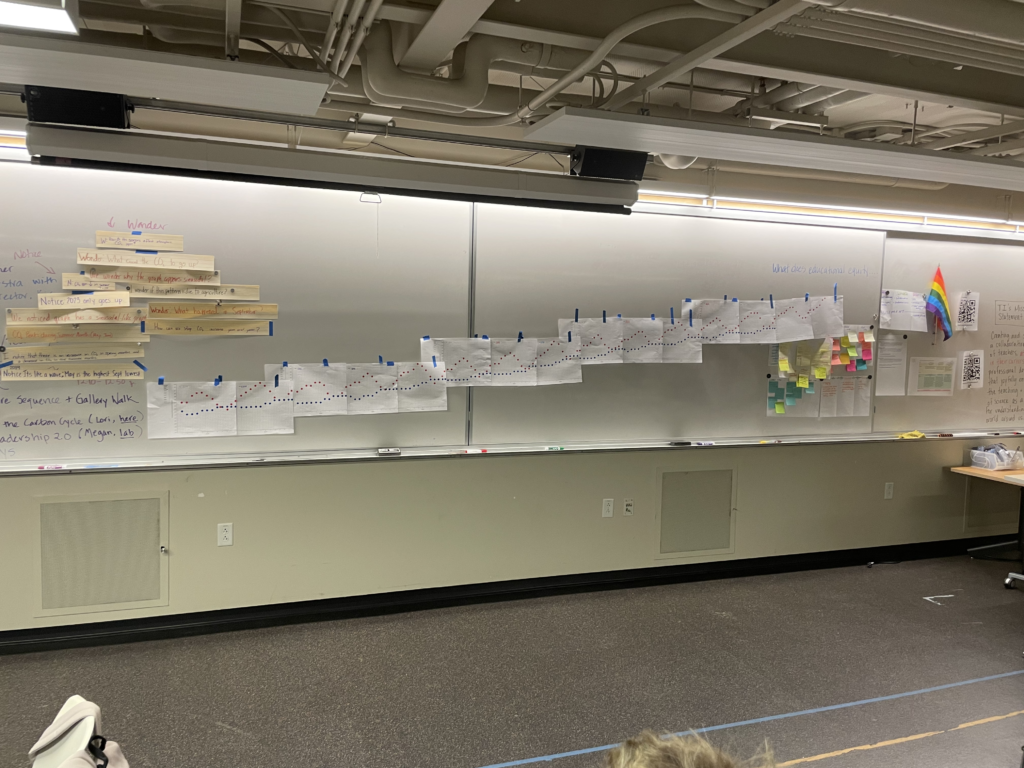
We could now see that although on an annual basis each individual year of CO2 data from Hawaii looks sinusoidal, the overall trend of the graph looks to be increasing.
Sense making the data involved looking at a globe and noticing that the Northern hemisphere has much more land on it than the Southern hemisphere. What is happening is that in the spring and summer plants grow in the Northern hemisphere resulting in sequestration of CO2 which we see as the troughs in the curve. During the winter months CO2 is released into the atmosphere through cellular respiration and decomposition resulting in the annual peaks. Without anthropomorphic interference the atmosphere would return to baseline levels each year, but because of CO2 emissions from humans there is an upward trend referred to as the Keeling Curve. In Antartica where there is little surrounding photosynthesizers to sequester carbon, the winter month upticks in CO2 are not balanced by any summer reductions and so the anthropomorphic addition of CO2 has created an annual a step shaped pattern.
I found this experience relevant to my content question as it shed light on the nuances of the atmospheric CO2 trends that are defining the climate crisis. It illustrates the amazing role that natural processes of photosynthesis play in historically regulating CO2 levels, and also suggests a strong argument for relying on nature to sequester carbon as a climate change solution using methods like those advocated by Paul Hawking in his Regeneration book.
Here is the link to the resource document provided as part of the Exploratorium workshop.
Massive Open Online Course – Nature-based Solutions for Disaster and Climate Resilience
This Massive Open Online Course (MOOC) was created by PEDRR which defines itself as an alliance of UN agencies and NGOs to promote ecosystem restoration.
The course consists of interactive readings, videos, discussion forums, links to more resources and quizzes. There are many people enrolled and actively participating which provides a powerful medium by which to engage in discussion and thereby get different perspectives from all over the world.
The course starts by defining what nature based solutions are – actions which restore and propagate ecosystems to draw down carbon from the atmosphere and adapt to the impacts of climate change. Their adaptation benefits include things like reducing urban heat, reducing the risk of flooding and improving air quality. The MOOC delves into many case studies of nature based solutions before pivoting to how individuals organizations and governments can study, advocate for and implement such solutions.
One of the case studies that stood out centered around a sand dune in Indonesia and the accompanying Mangrove ecosystem that they host. Two hotels only a few miles from each other had different approaches to the sand dune. One hotel cleared the dunes in order to provide guests with a better ocean view, while the other, an eco-resort in Yala National Park preserved the dunes in their natural state. When the 2004 Indian Ocean Tsunami hit the coastline, the hotel with the cleared dunes was devastated and 27 people died, whereas the eco-resort was protected by the dunes was unharmed.
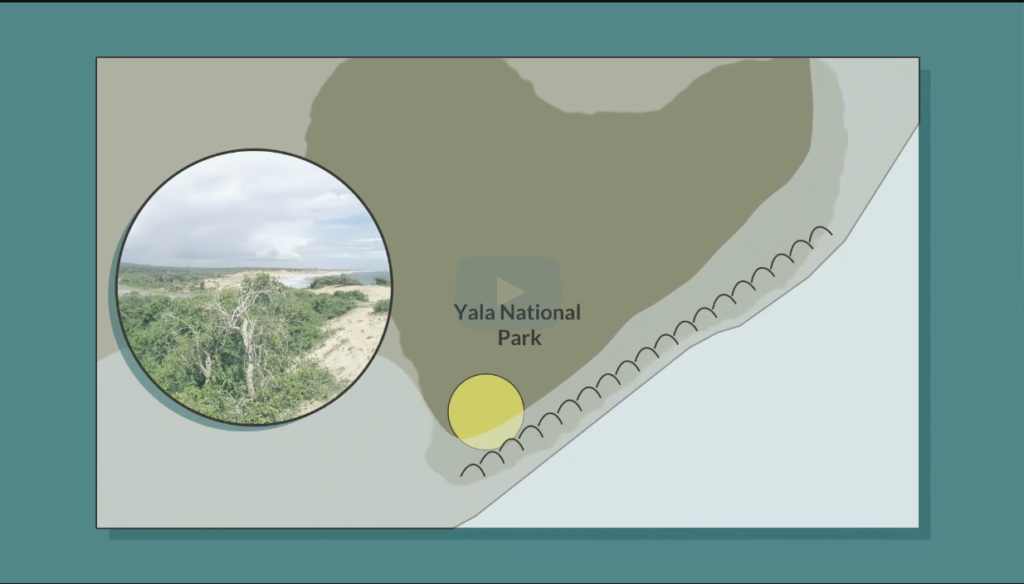
This case study drives home the concept that nature based solutions can be a powerful tool for addressing climate change. Not only do they help mitigate the greenhouse effect by drawing down carbon, but they help communities adapt to its impact. Other of my sources such as the book Regeneration by Paul Hawking have similarly argued for nature based solutions as the best approach to addressing climate change, and I found this MOOC a useful source to learn more about them.
Click the above link to return to the content resource collection homepage, or navigate to the other sections of the Content Resource Collection below.

